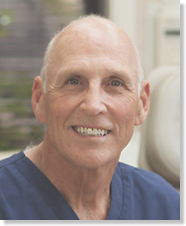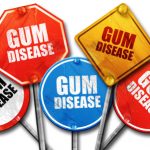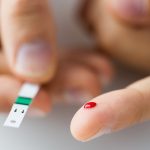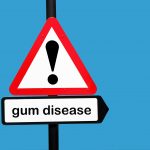Oral Health and the General Health Implications
Medically Reviewed by: Mike Robichaux, DDS

Did you know that optimal general health starts with optimal oral health? Failure to adequately care for your teeth, gums and your bite can result in the development of medical conditions far more serious than gum disease (periodontitis) or tooth loss.
Studies suggest that a number of secondary health issues can be caused as a result of poor oral hygiene. As Dr. Mayo of the Mayo Clinic once said, “If a person can take care of their teeth and gums they can extend their life by at least 10 years.”
Oral Health and General Health: What’s the Connection?
Today, the medical and dental communities are taking steps towards accurately documenting the connection between medical conditions, diseases and oral health.
According to Athanasios I. Zavras, Assistant Professor of Health Policy & Epidemiology for Harvard Faculty of Medicine & Dentistry, “Vascular diseases and cancer have both been linked to oral health. Preventing oral disease often seems to prevent diseases in other organs or systems. The importance of maintaining good oral health is seen under a new prism. The oral cavity is often the mirror of the body.” In fact, many diseases appear first in the mouth and are thus found while patients are in the dental chair.
The lack of consumer awareness appears to be most problematic when it comes to understanding the oral-systemic connection. “The importance of oral health in relation to total health has been overlooked. While many states are working to come up with better plans and practices to serve our needs, there is a general lack of consumer awareness when it comes to the impact of oral hygiene on day-to-day life,” says Liz Rogers, Director of Communications for Oral Health America.
Dentition & Diet: Building Blocks of Oral Health
Maintaining an intact dentition allows one to maintain a healthy diet. For example, people with no teeth have to change their diet to accommodate for their handicap. Finding it difficult to eat fruits or raw vegetables, they instead opt for “softer” foods that are high in saturated fats. The subsequent changes in one’s overall health are seldom linked to this inability to choose healthy foods because the integrity of the chewing system has been lost.
Further, recent studies have determined a connection between untreated dental infections and death. As Fern Ingber, President and CEO of the National Children’s Oral Health Foundation, states, “There are many children who die from dental infections or conditions relating to dental infections. Yet, many cases were not documented as such due to the lack of knowledge about the oral-systemic connection.”
In March of 2007, a 12-year old boy in Maryland died as a result of an infection that spread from his mouth to his brain. The young boy’s mother did not have dental insurance and was unable to provide her child with prompt attention for what seemed a benign toothache. When the boy finally received treatment, it was determined that an infection from a tooth abscess was the cause of his toothache. Unfortunately, the infection spread to his brain and caused his death. What should have been a minor dental treatment resulted in a fatal tragedy.
The Oral-Systemic Connection
An oral-systemic connection describes a link between diseases and conditions of the mouth, and medical conditions of the body. Certain medical conditions of the body have early oral manifestations. Regular dental visits are integral to maintaining a healthy oral environment and to controlling oral infections from the body that can cause tooth caries and periodontal disease.
The following is a partial list of medical conditions, viruses and diseases that have an oral-systemic connection:
AIDS: Intra-oral hairy leukoplakia (white patches on tongue and inner check) and Kaposi Sarcoma are indicators for AIDS.
Autoimmune Conditions: Pemphigus and lichen planus (auto-immune diseases) have oral manifestations.
Diabetes: People with diabetes who happen to have periodontal disease may suffer excessive bone loss of the jaw or surrounding bone structure and have difficulties in healing.
Fanconi Anemia: Fanconi anemia is a rare genetic syndrome characterized by short stature, myelosuppression (diminished bone marrow activity) and the development of oral cancer in young adults. The genetic disorder has been linked with an increased tendency towards periodontal disease and other dental abnormalities.
Heart Disease: Evidence is mounting as to the role that oral microbes and host response might play in the causation of heart disease and stroke. Eleven bacteria, 5 – 6 being extremely pathologic, have been identified as playing a significant role in heart disease. Through DNA testing, the same bacteria in the mouth have been found in the walls of the coronary arteries, producing inflammation and lesions. It is now known how they get there. And again, through DNA testing, the same bacteria in the mouth and the arteries have been found alive in blood clots removed from patients receiving stents. According to the Bale/Doneen group, it is estimated that perhaps half of heart attacks and strokes are the result of these bacteria. The good news is that they can be identified within a dental office and protocols can be developed to eliminate them.
Human Papilloma Virus: Human papilloma virus has been linked to oropharyngeal cancer as documented in a recent study conducted by the New England Journal of Medicine.
Pancreatic Cancer: In 2007, researchers at the Harvard School of Public Health published the results of a study that found strong evidence linking periodontal disease to a person’s increased risk for pancreatic cancer. Pancreatic cancer is the fourth leading cause of cancer death in the United States, with a five year survival rate of less than five percent. In addition, the aforementioned bacteria found in the coronary arteries and blood clots have also been found associated with these tumors as well as in the brains of Alzheimer patients.
Stroke: The evidence is mounting as to the role that these oral microbes and host response might play in the causation of heart disease and stroke. Recent studies have linked periodontal disease with strokes.
Exploring the Causes of Oral Disease
- Impeded saliva flow, which may be caused by medications, disease or part of the natural progression of age, compromises the protective elements provided by saliva against pathogens, irritants and toxins that enter the mouth. The solution to pollution is dilution! Saliva helps to remove infected white blood cells, yeast, viruses and bacteria from the teeth and surrounding mucosal surfaces. Saliva protects the tissues in the mouth. For example, lysozyme, a molecule in saliva, acts as an antibacterial agent. It is effective because it breaks down the sugar molecules in the cell structure of the bacteria on the teeth. Saliva also mineralizes to protect the enamel on the surface of teeth. There are over 500 species of bacterial microbes that colonize the oral cavity. They are not necessarily a detriment; yet, when they form a “biofilm” layer of colonization, the saliva defense system is often an inefficient means through which to disintegrate the biofilm. The biofilm layer may then contribute to microbial infections and other illnesses.
- Microbial infections, including those caused by bacteria, viruses and fungi, are the cause of several oral diseases, including dental caries, periodontal diseases, herpes labialis and yeast infections (also known as candidiasis).
- The causes and origin of diseases and disorders affecting the craniofacial structures are complex, and may include elements of genetic, environmental and behavioral background. For example, you may have a malocclusion (bad bite) due to genetics. The craniofacial complex can reproduce cells and tissues to foster proper functionality over the course of a lifetime. This functionality may be compromised if the oral cavity and body are not properly cared for.
- Inherited and congenital conditions may affect the craniofacial structure, which can result in impairments that involve other body organs and systems.
- Tobacco use, excessive alcohol use and unhealthy dietary practices contribute to oral diseases and disorders. For example, tobacco use is a risk factor for oral and pharyngeal cancers, periodontal diseases, candidiasis and dental caries. An improper diet containing foods high in sugar and saturated fats is a contributor to tooth decay and alcohol use is an independent risk factor for oral cancer.
- Some chronic diseases, such as Sjögren’s syndrome, are initially diagnosed through oral symptoms. Sjögren’s syndrome typically affects women and is characterized by the inability to produce a sufficient amount of saliva. This syndrome can cause pain and produce rapid dental caries. Research has revealed that Sjögren’s may be initiated by exposure to toxins that block the body’s ability to use available proteins. Since it is genetically determined where the body will go to “steal” proteins from itself, the Sjögren’s patients will get the protein from their salivary glands. Unfortunately, the body makes antibodies to that protein and begins to attach to those glands, ultimately making them unable to function.
- Oral-facial conditions are common, often having complex origins and causes that can affect other organs. For example, many TMD (jaw joint dysfunction) patients complain of facial pain and difficulty in moving surrounding muscles as well as other areas of the body. In addition, the collections of symptoms that have been attributed to TMD are exactly the same symptoms we see in patients who have airway/sleep issues. Much of the deterioration we see in the mouth is directly related to an inability to breathe well while we sleep.
Dental Care for People with Unique Considerations
The following partial list is a small sample of the types of dental care necessary to avoid a negative oral – systemic effect for people with unique considerations:
Bisphosphonate Users: Cancer patients, patients with osteoporosis and other users of bisphosphonates (like Boniva, Fosamax) must maintain their oral health to prevent a serious complication called osteonecrosis of the jaw. This condition tends to occur more frequently among intravenous users of bisphosphonates, with rates ranging from 5 to 10 percent, though it has also been linked with the use of various oral bisphosphonates.
Cancer Patients: Cancer patients are required to have all dental procedures completed prior to starting radiation therapy or chemotherapy. Cancer patients who receive a more potent form of bisphosphonates must maintain their oral health to prevent a serious complication called osteonecrosis of the jaw.
Osteoporosis Sufferers: Women with osteoporosis who receive bisphosphonates must maintain their oral health to prevent a serious complication called osteonecrosis of the jaw.
Pregnant Women: Pregnant women and women considering pregnancy should make an effort to undergo treatment if they suffer from periodontal disease (gum disease). Research has shown that women with periodontal disease tend to have more complications or give birth to babies of lesser weight.
Diagnostic Technologies
A number of technologies are available to help screen and diagnose oral diseases and conditions. “For the first time ever in the history of dentistry, we have the opportunity to help save lives, and improve the overall and oral health of our patients”, states Ron Schefdore, DDS, founder of the Healthy Heart Dentistry Program. More and more health-centered dentists are relying on blood chemistries to identify systemic issues in patients where oral problems have not responded to traditional dental protocols. Perhaps the greatest contributor to this aspect of dental practice was the late H. L. “Sam” Queen. His knowledge and contributions will be appreciated for a long time.
Some of the technologies used to screen for oral disease include:
Disease Susceptibility Detector: Microbiologic arrays have been developed and are now used to screen for the pathogens that cause tooth caries and periodontal disease. Consumers as young as two years old can now be screened for certain microbes to assess if they are at increased risk to develop dental caries.
Moreover, Harvard researchers are in the development of applying micro-array chips to foster the ability to screen one’s genome for markers of susceptibility, or for the expression of genes that cause disease. This will make saliva cultures a new diagnostic tool (less invasive than a blood test) for diseases such as early dysphasia and cancers. This diagnostic advantage is expected to dramatically affect how dentistry is practiced in the future.
Oral Cancer Revealed: Cancer of the oral cavity is a lethal disease, killing half of all sufferers. If diagnosed early, survival improves significantly. Dentists now have some important aids in their efforts to diagnose oral cancers early including Vizilite and Velscope. These technologies can detect abnormal tissue in the mouth by measuring fluorescence. Healthy tissue and abnormal tissue can be differentiated when viewed under a specialized white light.
Heart Attack and Stroke Filters: Inflammation in the body is indicative of imbalance. The liver develops C-Reactive Protein (CRP) in response to chronic inflammation. Today, there is a CRP test offered in some dental practices to screen for inflammation. According to a recent report by the New England Journal of Medicine, the CRP test is a more accurate indicator of heart attack and stroke than high cholesterol.
People can now go to a select number of dental offices to receive a finger stick blood screening for CRP, high cholesterol and blood sugar. In addition, simple tests can be run that will identify those 11 bacteria that were previously mentioned and hopefully be eradicated from the mouth. Finally, airway/sleep issues which tax the heart and the whole cardiovascular system are often first identified during a routine dental visit. The dentist, in consultation with the patient, may recommend referral to the appropriate area of medicine to further explore the significance of these findings. One must always remember that what is large today was once small! Early intervention and prevention are always preferred to treatment.
What You Can Do?
As one can clearly see, the mouth is not a compartment. The blood that flows in the teeth, the gums, and the bone in the jaws also flows through one’s eyes, fingers, heart, lungs, kidneys, etc. What happens in the mouth can affect the health of the entire body and what happens in the body can affect the health of the mouth. Everything left alone deteriorates… the Law of Entropy! The mouth, like the entire body, remembers. If we ignore opportunities to care for ourselves today, we may pay a high price later for those wasted opportunities.
Since plaque (the soft, sticky substance made of germs and food) forms every 24 – 36 hours and the bacteria within the plaque produce a painless acid, we really only have to clean our teeth once a day, preferably right before we go to bed. We don’t need toothpaste or mouthwash (unless as part of a short term protocol) to have a clean, healthy mouth. We just need a good toothbrush and some dental floss. It would be helpful to clean our teeth before a magnifying mirror with a little light, the kind women use in placing makeup. The brush should be soft and the bristles directed at and below the gumline (as though we were painting the root under the gum), actually making the gums blanche. It would be wise to brush and floss in an orderly fashion, following the same sequence each evening. The most common error made is to open the lower jaw too wide when brushing the bottom teeth. The teeth should almost be touching when brushing the bottom teeth.
Finally, much of the damage done to our teeth that make the mouth look old and causes dentistry that has been placed to fail more rapidly, occurs at night while we sleep. Going to bed each night with the inability to touch our teeth while we sleep will go a long way toward stopping one’s mouth from deteriorating. And during the day it is important to always remember that our teeth should only touch throughout the day when we are swallowing. The rest of the time, lips together, teeth apart, and tongue soft would be a wise mantra!
[updated May 20, 2019]
About the Reviewer
 Mike Robichaux, DDS, is a leading dentist who has served patients in and around Slidell, LA since 1974. He and his team offer patients a holistic approach to dental care which acknowledges a strong connection between oral health and general health. Having amassed more than 4,000 hours of continuing education, Dr. Robichaux aims to stay at the forefront of dental treatment breakthroughs and technology advances that can improve patient outcomes.
Mike Robichaux, DDS, is a leading dentist who has served patients in and around Slidell, LA since 1974. He and his team offer patients a holistic approach to dental care which acknowledges a strong connection between oral health and general health. Having amassed more than 4,000 hours of continuing education, Dr. Robichaux aims to stay at the forefront of dental treatment breakthroughs and technology advances that can improve patient outcomes.
Dr. Robichaux earned his Doctor of Dental Surgery degree from the Louisiana State University School of Dentistry. He achieved Fellowship and Mastership statuses from the Academy of General Dentistry, and has served as President for a number of prestigious dentistry organizations such as the New Orleans Dental Association and the Louisiana Academy of General Dentistry. Learn more about Dr. Robichaux.






